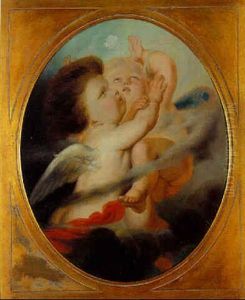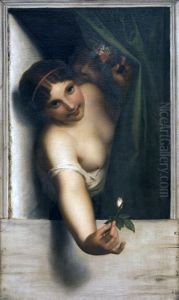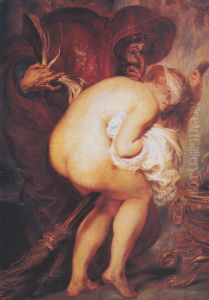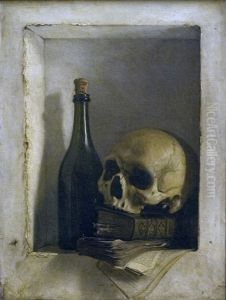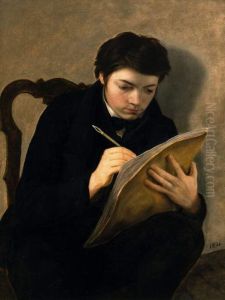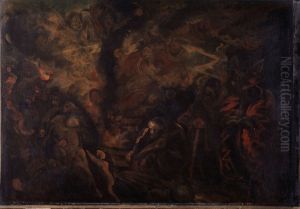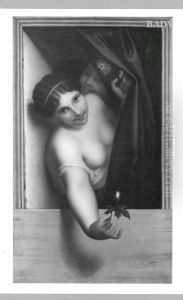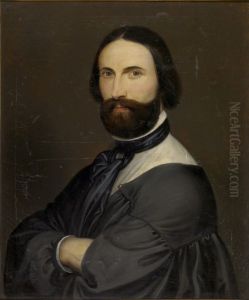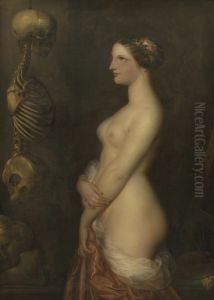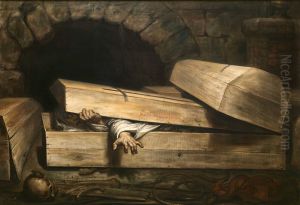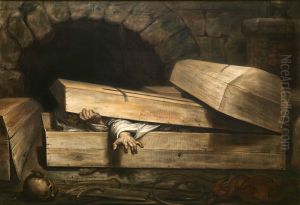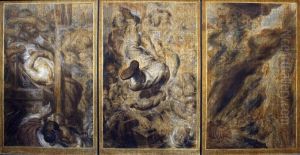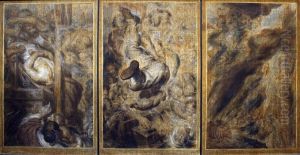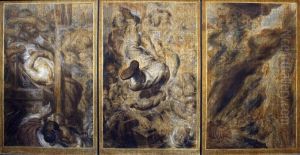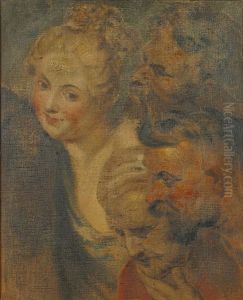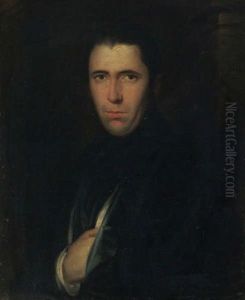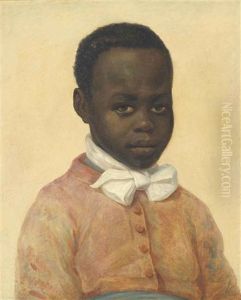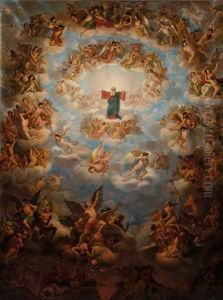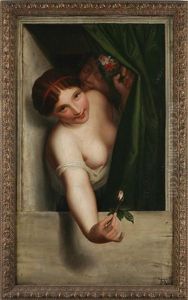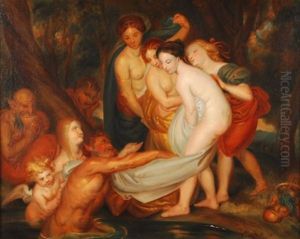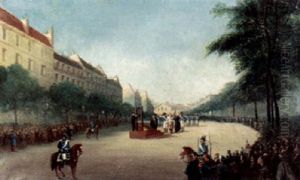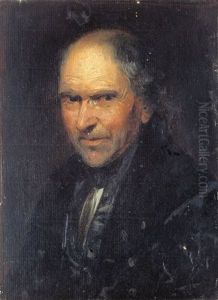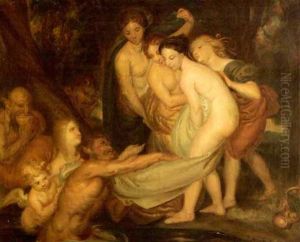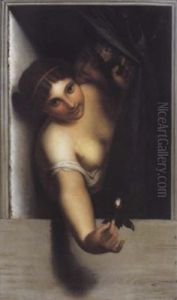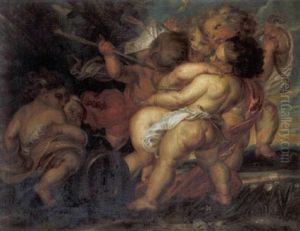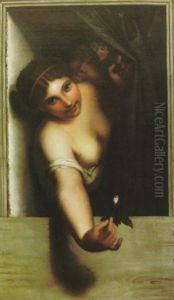Antoine Wiertz Paintings
Antoine Wiertz was a Belgian painter, sculptor, and writer born on February 22, 1806, in Dinant, Principality of Liège, French First Republic (now Belgium). He is known for his monumental historical and allegorical paintings, as well as his association with the Romantic movement. Wiertz's works are characterized by their dramatic intensity, elaborate composition, and often, a fascination with the macabre.
Wiertz won the prestigious Prix de Rome in 1832, which allowed him to study in Rome, where he was influenced by the works of the Italian masters and the dramatic stories of the Bible and mythology. Upon returning to Belgium, he embarked on an ambitious project to create grand historical paintings that conveyed moral messages, inspired by his belief in the power of art to elevate and educate.
Throughout his career, Wiertz struggled with public and critical reception. His work was often met with mixed reviews, with some praising his visionary approach and others criticizing his sometimes overwrought execution and melodramatic themes. Despite this, he maintained a passionate conviction in his artistic mission, often clashing with the artistic establishment.
In 1850, Wiertz persuaded the Belgian government to provide him with a studio and gallery in Brussels, now known as the Musée Wiertz, where he worked and displayed his large-scale paintings and sculptures. This arrangement was unprecedented and is a testament to his unique position in Belgian art history.
Wiertz's oeuvre includes not only paintings and sculptures but also a significant body of writings, including essays on art and philosophy. His work reflects a wide range of influences, from the Baroque to the emerging Realist movement, yet always with a distinctive, often controversial, voice.
Antoine Wiertz died on June 18, 1865, in Brussels, Belgium. His legacy is complex; while he is not universally celebrated, he remains a fascinating figure for his ambitious, if not always successful, attempts to blend art, philosophy, and social critique. The Musée Wiertz in Brussels still stands as a testament to his life and work, offering a unique insight into the artist's vast, eclectic, and often provocative body of work.
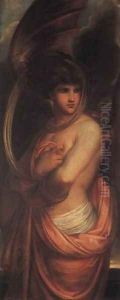
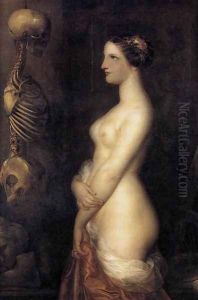

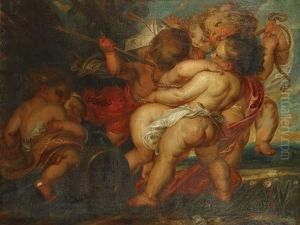
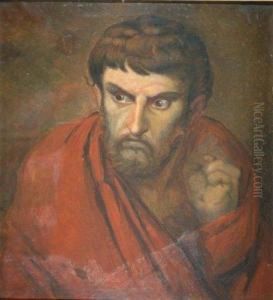
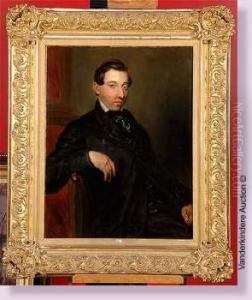

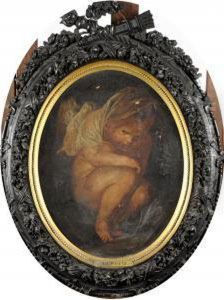
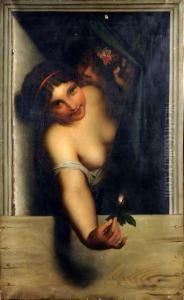
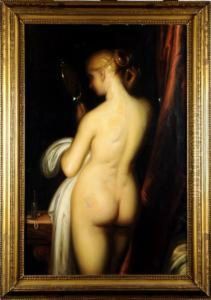

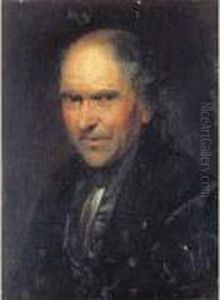
![[portrait De Madame Ligi]](https://www.niceartgallery.com/imgs/1695951/s/antoine-wiertz-portrait-de-madame-ligi-99070499.jpg)
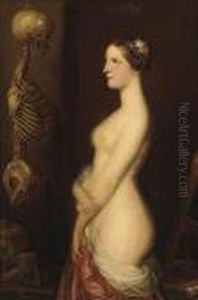
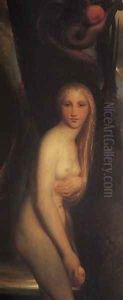
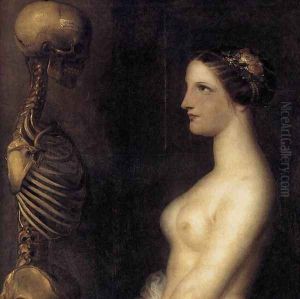
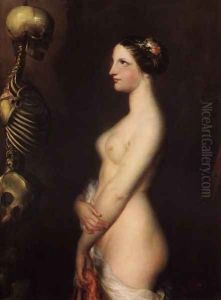
![[le Bouton De Rose]](https://www.niceartgallery.com/imgs/1108145/s/antoine-wiertz-le-bouton-de-rose-68e2740e.jpg)
